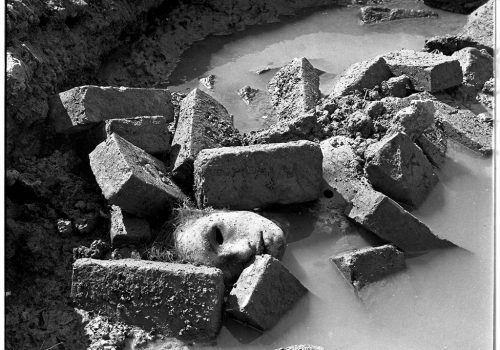A dead face, bruised, emerges out of muddy waters, bricks lie strewn around. Only the face, no other part is visible. Gouged eyes stare, like black holes. The killing fields of Rayer Bazar, 14 December 1971. The Pakistan army and their allies al-Badr and al-Shams had killed most brutally East Bengal’s teachers, doctors, engineers, poets and writers on that fateful night. Rashid Talukder‘s photograph is a testimony to the genocide conducted by the Pakistan army. Even 47 years after independence, a severed head, gazes at us vacantly. Silently.
Rashid Talukder’s camera is witness to innumerable tumultuous times – the mass uprising of 1969, the bloody freedom struggle of 1971, Sheikh Mujib’s speech of 7 th March, Shaheed Asad’s blood-drenched shirt, Moulana Bhashani, Kazi Nazrul, also the anti-Ershad movement, and many other happenings large and small. Rashid Talukder’s photographs lay out the map on which this country, its politics and everyday life vibrate, and provide a priceless document of the people’s history.
















